Sound cards are still a thing nowadays and there are not a lot of them, especially the hi-end or hi-res ones that can really drive speakers or (audiophile-grade) headphones properly. A few months ago, Creative Labs released the AE-7 and AE-9 PCIe sound cards; the successors of the Sound Blaster AE-5 we reviewed a couple of years ago. Both features improved features, specifications and comes with additional accessories or controls. Today, we are just going to focus on the Sound Blaster AE-7. If you’re in the market looking for a hi-res PCIe sound card for your (gaming) desktop PC, stick around and continue reading our Sound Blaster AE-7 review below.
Creative Sound Blaster AE-7 Hi-Res PCIe DAC with AMP Review
The Sound Blaster AE-7 has a familiar design and aesthetics with the older AE-5. But gone are the RGB lighting, instead you get a clean white lighting. Most of the upgrades are on the components itself, aside from the convenient control module.
At the heart of the AE-7 lies a hi-res ESS Sabre-class 9018 DAC with a 127dB DNR audio stream. It has a Total Harmonic Distortion Plus Noise of up to -120 dB, 0.0001%. It supports 32bit/384kHz PCM and up to DSD64 playback. The AE-5 didn’t have DSD support, but this one, you can natively play a DSD audio file.
Not only does the AE-7 features a really good DAC chip, but it also features a custom Xamp discrete headphone bi-amplifier. It basically means that each channel, left and right, has its own amplification; similar to a dual DAC setup. Just like a dual DAC setup, the benefit of this is having a cleaner and very low to no background noise at all.
The amp section also features an ultra-low 1Ω headphone output impedance. It supports 16Ω to studio-grade headphones of up to 600Ω, including high-end planar-magnetic headphones. Well, planar headphones are usually (very) efficient and doesn’t have a high impedance.
Speaking of planar headphones, some of the headphones I used to test and listen to the AE-7 are the MrSpeakers Ether Flow and Audeze LCDi4 planar headphones. Both are top of the line planar magnetic headphones and the AE-7 can comfortably drive both headphones with ease.
The AE-7 also supports 5.1 discrete surround for speakers, (7.1) Sound Blaster Surround Virtualization and encoding like Dolby Digital Live and DTS Connect. There are several audio enhancements and customization that you can do with the AE-7. And you’ll need the Command software to take advantage of those customization. We’ll take a look on the software later in this review.
Below is a specs comparison between the Sound Blaster AE-9, AE-7 and AE-5.
Sound Blaster AE-9 vs AE-7 vs AE-5 Specs Comparison
| Sound BlasterX AE-5 | Sound Blaster AE-7 | Sound Blaster AE-9 | |
|---|---|---|---|
| Audio Processor | Sound Core3D | Sound Core3D | Sound Core3D |
| DNR/SNR | DAC: 122 dB | DAC: 127 dB | DAC: 129 dB |
| DAC | ESS SABRE32 Ultra | ESS SABRE-class 9018 | ESS SABRE-class 9038 |
| Max. Playback Resolution | PCM: 32-bit / 384 kHz | PCM: 32-bit / 384 kHz DSD: DSD64 | PCM: 32-bit / 384 kHz DSD: DSD64 |
| THD + N | 0.00032% (DAC) | 0.0001% (DAC) | 0.0001% (DAC) |
| Discrete Headphone AMP | Yes (Bi-amp) | Yes (Bi-amp) | Yes (Bi-amp) |
| Swappable OP AMPs | No | No | Yes |
| ACM | No | Yes | Yes |
| RGB Aurora Lighting | Yes | No | No |
| ASIO Support | 2.3, Playback and Recording | 2.3, Playback and Recording | 2.3, Playback and Recording |
| Encoding | No | Dolby Digital Live / DTS | Dolby Digital Live / DTS |
| Scout Mode | Yes | Yes | Yes |
| Connector Type | 3x 3.5 mm 5.1 Line-out 1x TOSLINK Optical-out 1x 3.5 mm Headphone Out 1x 3.5 mm Mic / Line-in 1x Intel HD Audio Front Panel | 3x 3.5 mm 5.1 Line-out 1x TOSLINK Optical-out 1x 3.5 mm HP-out 1x 3.5 mm Mic / Line-in | 1x TOSLINK Optical-in 1x TOSLINK Optical-out 1x ⅛″ Rear-out 1x ⅛″ Center / Sub-out 1x ACM Link 1x 6-pin (PCI-e) Power Header (required for ACM) 2 x RCA (Left / Right) Front-out |
For the latest pricing and availability of the Creative Sound Blaster AE-7, check links below:
For US: available on Amazon.com here
For US/Global: available on Newegg.com here
For UK: available on Amazon UK here
Packaging and Closer Look at the AE-7
The Sound Blaster AE-7’s box is like a box of a graphics card only smaller. After all, like a graphics card, it is also an add-in-card to be installed on a PCIe slot. The box includes the AE-7 PCIe sound card, the audio control module and some reading materials. You will also need to download the Sound Blaster Command software from Creative’s page.
The audio control module (ACM) is just an extension of the sound card. It’s basically for convenience, so that you can plug your headphone and/or microphone, or adjust the volume. It also has a built-in mic. You can place the ACM on your desktop, so that you don’t have to route your headphone or mic’s cable all the way (behind) your desktop PC.
Above you can see how the AE-7 looks like; it’s has the same design and aesthetics with the older AE-5. But there is no RGB lighting, instead you get a clean white LED highlight. The output ports include a TOSLINK optical-out, a 3.5mm headphone out, a 3.5mm mic / line-in and three 3.5mm 5.1 line-out.
Above you can see what’s inside the AE-7. All the connectors are gold-plated and looks like the components used are good to great quality as well.
Installing the AE-7 is very easy; you can install it on any PCIe slot on your system’s motherboard. It only requires a PCIe_x1 slot, but you can also install it on an x4, x8 or x16 PCIe slot. I’m not going to do a step by step installation since a guide/manual is already provided.
After you have installed the AE-7 sound card, you need to download and install the Sound Blaster Command software. Unfortunately, unlike the ACM, the Command software is required for you to fully take advantage and control the AE-7.
Sound Blaster Command Software
The Sound Blaster Command software has improved a lot since the time we check out the older AE-5 and its accompanying software Sound Blaster Connect. The Sound Blaster Command software is much easier to use, more organized and easier to navigate than the Connect.
The first option you get is to enable/disable the SBX profile. These are basically like EQ presets that can be tweak further depending on the user’s preference. I am surprised that there are a lot of profiles included in the software. There is a profile for Cinema, Concert, Night, Gaming and on top of Gaming profile; there are profile for individual games. Some of the games are Battlefield 1, Call of Duty, Counter Strike, DOTA 2, Fortnite, League of Legends, Overwatch and many more. There’s even a profile for the Witcher 3.
There’s simply a lot to choose from; simply pick one that you preferred. Of course, it is not mandatory or required that when you play Witcher 3, you need to use the profile for the Witcher 3. Or when you are playing a racing game or FPS, you don’t need to choose the preset or profile for them. It’s really up to the user which profile they prefer most.
If you didn’t like any of the profile, you can definitely customize or make your own preset from the Equalizer menu. Another important section of the Command is the Playback menu. If you are using a headphone, you must select the headphone from this menu. Otherwise, you might not hear any sound through your headphone. Of course, if you are using speakers or surround speaker; choose the appropriate settings and configuration.
Personally, when I tested the Sound Blaster AE-7 and listen some music, I use the direct mode with my planar headphones. Direct mode gives you audio in its purest form that is directly from the source. No audio effects are applied, so you only hear how the record or audio is intended to sound like.
The Recording menu is for the microphone. This is where you tweak and fine tune your microphone settings. You can even apply some “voice morph” and it’s actually fun to play with. Although it’s not 100% perfect, and the built-in mic on the ACM isn’t high-end or top of the line level. It’s just okay and serviceable, just like mics on (gaming) headphones.
Scout mode is like a “cheat” where it would help the gamer hear the footsteps or make the speech of the other players or characters more audible. I’m not sure if this is going to be useful in competitive fast paced games like Counter Strike; since the player will mostly concentrate on the screen or what the player sees instead of hear. I’m personally not a fan of this feature so I just leave it turned off.
The Encoder is useful if you have a media that is recorded with Dolby Audio or DTS. You can select the appropriate settings and configuration from this menu. Finally, there is the Mixer menu. It’s not an actual mixer software, but more like an individual volume control for each output and input.
Lastly, there is the sign in menu if you have a creative account and the general settings menu for the Command software. Now let’s check out how the AE-7 sounds like.
Testing and Subjective Listening / Gaming Experience
The Sound Blaster AE-7 has been with us for three months (plus) now. I have been switching between the AE-7 and several of my external DAC/AMP, like the ALO CDM and Schiit Jotunheim (with balanced AK4490 dual DAC). I also used the direct mode while testing the AE-7 most of the time to listen how it sounds like.
Actually, disabling the direct mode and turning off the SBX profile still sounds like it’s much warmer. So even if you didn’t turn on or select any SBX profile, I think that it’s not totally flat and only when enabling the Direct mode gives you that clean and unfiltered sound.
By the way, I am using the MrSpeakers Ether Flow, Audeze LCDi4 and Campfire Audio Andromeda to test and listen with the AE-7. I don’t have a hard-to-drive headphone or a headphone that has a very high impedance, like 600 Ohms. So, I was not able to test how the AE-7 would handle a high impedance headphone.
The Campfire Andromeda is a very sensitive earphone. It has an impedance of 12.8 Ohms only. That’s a very sensitive IEM / earphone and any noise that a device would emit or produce can easily be picked up by the Andromeda. When I tried the Andromeda with the AE-7, I could hear some feedback or noise. The low gain setting of the AE-7 only covers 16-31 Ohms; so basically, it is not low enough for a (sensitive) earphone or IEM (in-ear monitor).
But when I used the planar headphones, I could not hear the feedback or any background noise anymore. If I did, I would conclude this review right away and would not recommend the AE-7 at all. For reference, the Audeze LCDi4 has an impedance of 32 Ohms and the Ether Flow has an impedance of 23 Ohms.
So basically, if you have a headphone / earphone with an impedance lower than 16 Ohms, I would not recommend using the AE-7 with it. It would definitely pickup any (background) noise. Better use the AE-7 with headphones higher than 16 Ohms, so that it would not pick up those noise or feedback.
I’m not surprised if the Andromeda can pick up some noise, after all, the AE-7 is an add-in-card and it is still inside the system. Even with the LG V40 with its Quad DAC technology, I can still hear from noise in the background.
However, it does have an advantage over built-in sound cards or DACs that are built-in with the motherboard. But when compared to an external DAC/AMP like the Jotunheim, it’s going to have a hard time competing in terms of (background) noise.
Going back to listening the AE-7 with the planar headphones, find it clean and clear. But do set the appropriate gain settings though, since setting a higher and inappropriate gain would result in a noisier background. Not to mention, it may damage your hearing and/or your headphone due to higher volume output.
With my planar headphones and listening via direct mode, I find the AE-7 to be leaning towards a bit on the warm side. It can produce a warm and deep bass, as well as detailed and airy highs. It’s doesn’t sound harsh or analytical. The mid-section is also good, not laid back or (too) forward sounding. I guess, like the previous AE-5, it sounds “consumer friendly”. It’s okay, and the more important thing is that it produces a clear and clean sound with the headphones I tested it with.
As for gaming, well, the AE-7 is definitely a treat. You can enhance different aspects of the audio; like enhance the bass for an explosive sound and gun fire. You could enhance the clarity, make footsteps more noticeable or conversation / dialogue clearer. Or enable surround sound and make the game or video that you are watching more immersive.
Pricing and Availability
The Creative Sound Blaster AE-7 Hi-Res PCIe sound card is now available. It comes with a manufacturer’s suggest retail price of $229.99. However, prices do change and some retailers price their items differently. For the latest pricing and availability of the AE-7, kindly check out the links below.
Creative Sound Blaster AE-7 latest pricing and availability:
For US: available on Amazon.com here
For US/Global: available on Newegg.com here
For UK: available on Amazon UK here
Creative Sound Blaster AE-7 Review Conclusion
Based on my experience with using the AE-7 for the past three months, I think Creative has done a great job at improving their sound card. Sound quality is great, just don’t use a very sensitive IEM with it. It’s definitely better than an onboard DAC, perhaps better than any onboard DAC on any motherboard in the market.
The Sound Blaster Command software is also much better than the Sound Blaster Connect. I think you’re not only going to buy the AE-7 just because it has a (much) better sound quality than an onboard DAC; but it also has features like encoding, EQ customization, sound profiles and many more than ordinary DAC or sound cards does not offer.
By the way, if you game and stream as well, you might want to check out the AE-9. It has a much better ACM with support for dynamic, phantom-powered condenser XLR mic. It also has a lower noise floor with support for IEMs and the op-amps are swappable. Creative also used fine gold Nichicon capacitors, which are simply missing on the AE-7.
I can only see two cons or something that you may want to consider before deciding whether you need the AE-7 or not. First, it is relatively expensive compared to the other PCIe sound cards in the market. But it does offer features that other sound cards do not. Not to mention, the Audio Control Module (ACM) is really a convenient accessory.
The second is, if you use IEMs or earphones instead of headphones, especially (very) sensitive earphones or earphones with very low impedance; I wouldn’t recommend this one for you. Get a really good external DAC instead; preferably with dual DACs. But I don’t think the AE-7 is really targeted towards earphone users in the first place.
Also, if you are an audiophile purist, what are you still doing here? Go get a Schiit Jotunheim, or an iFi Micro iDSD Black Label, or perhaps the Chord Hugo 2. There are a lot of external DAC/AMPs that are for audiophiles.
For gamers or part audio enthusiast part gamer, and you want to enhance your music, multimedia and gaming experience with your mid to high end headphones, consider the Sound Blaster AE-7 as your next upgrade.

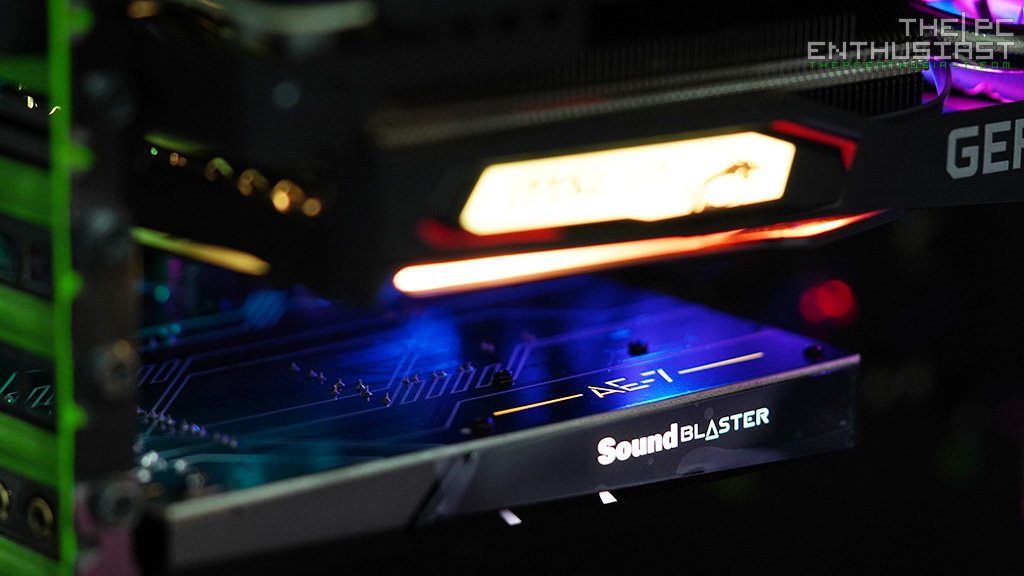

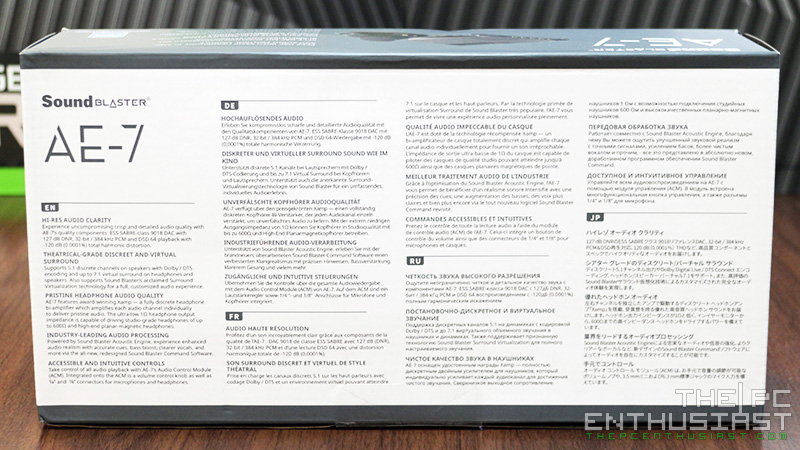

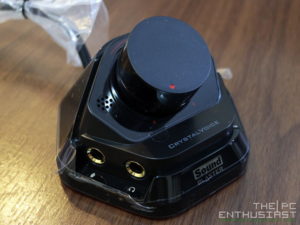
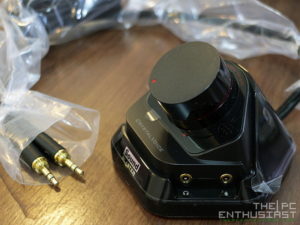
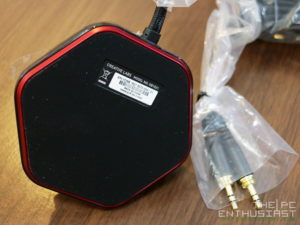
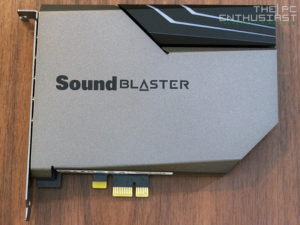
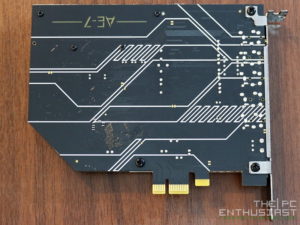
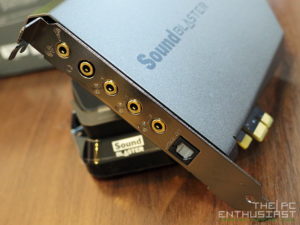

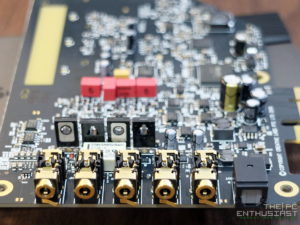
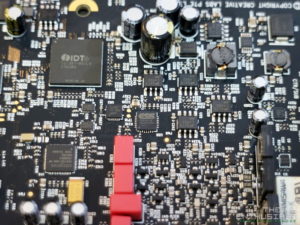
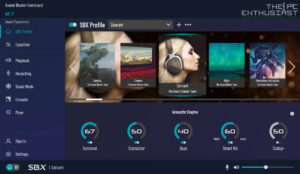
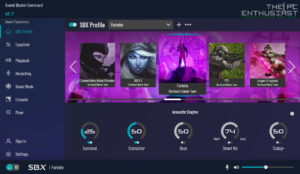
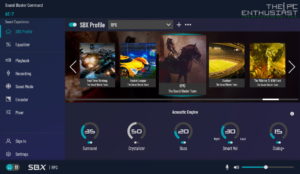

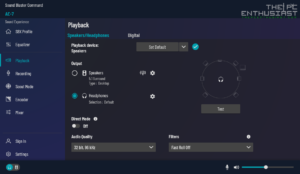
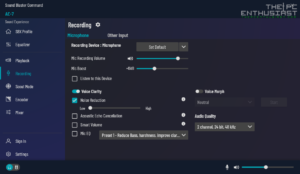
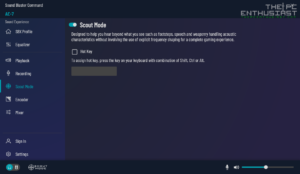
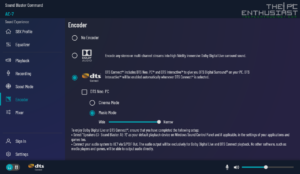
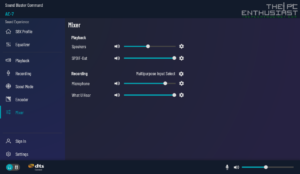

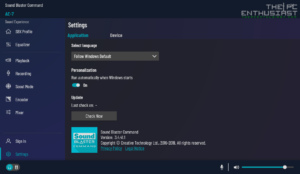


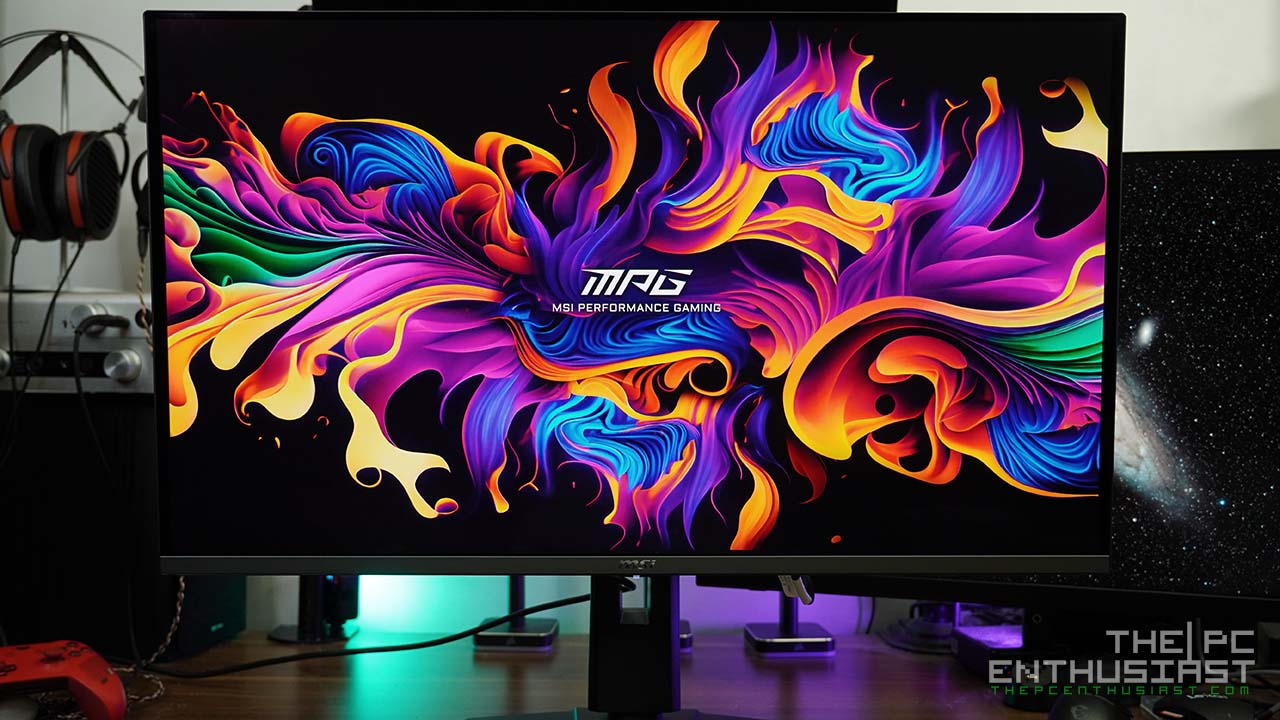
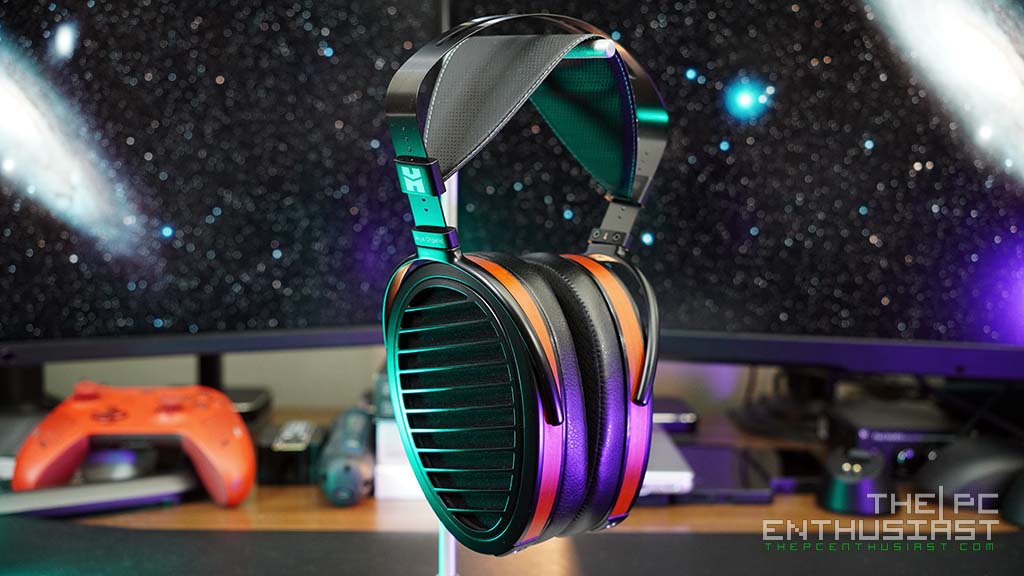
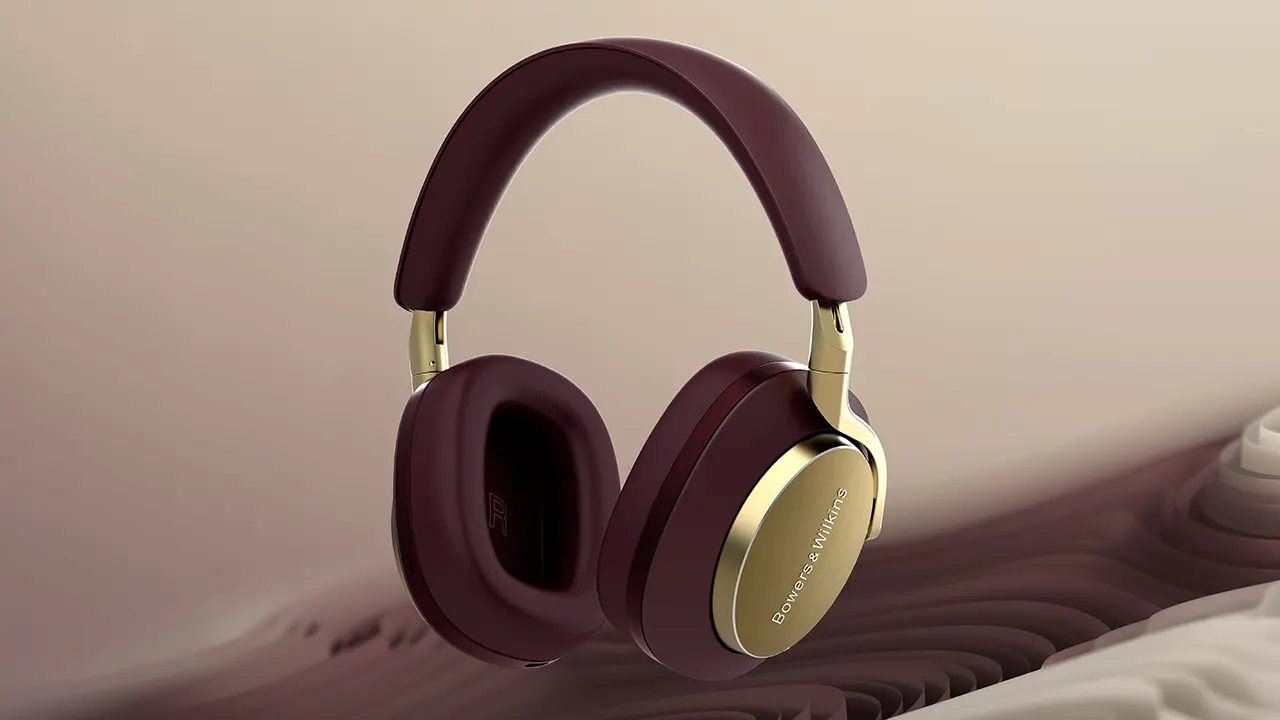
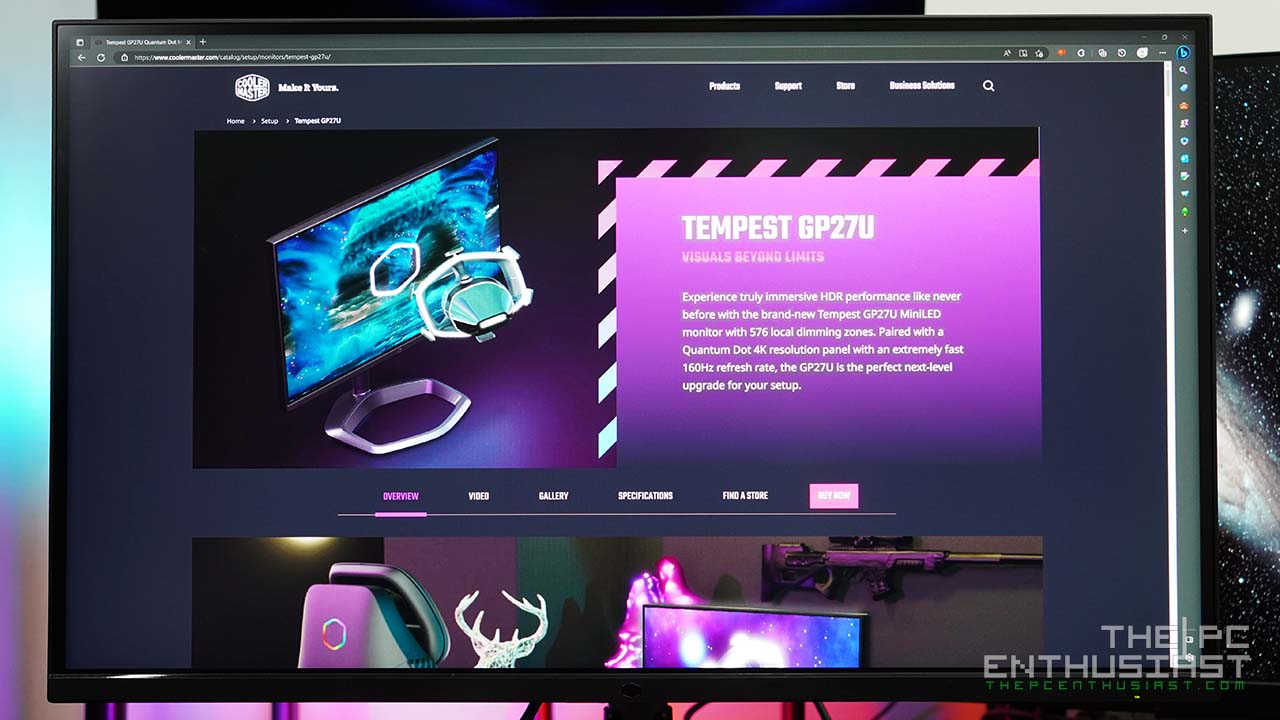
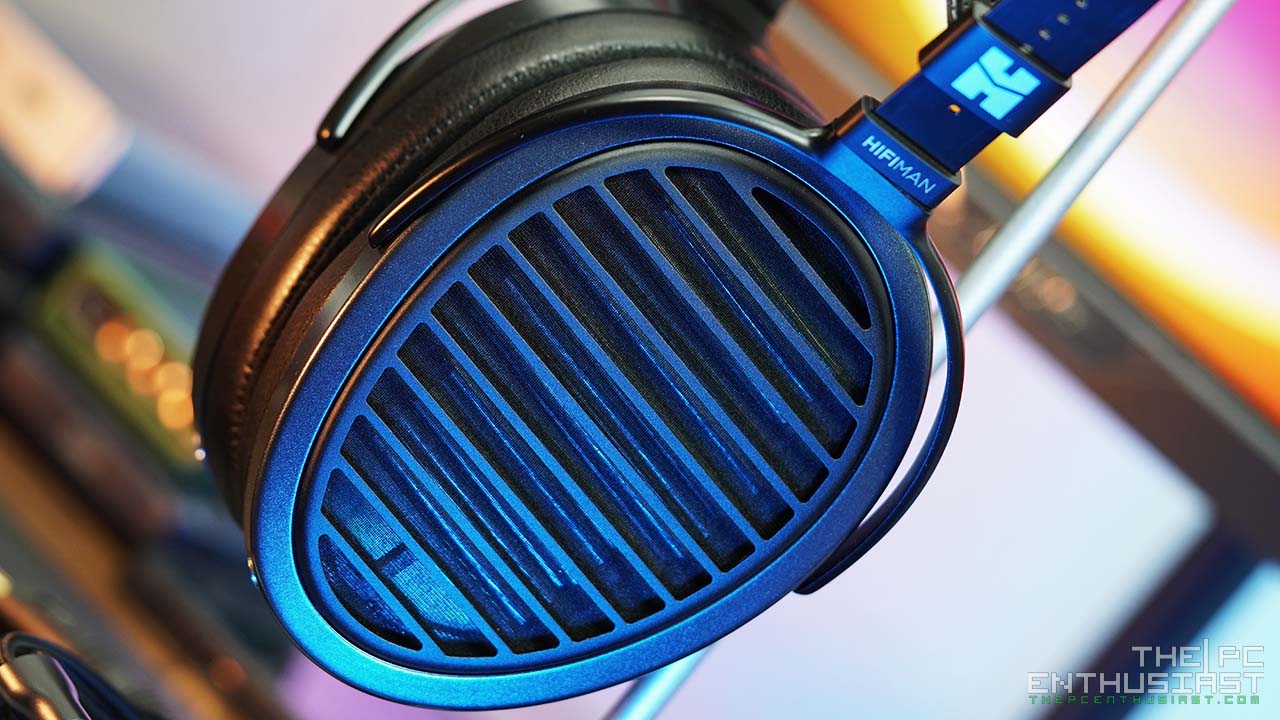
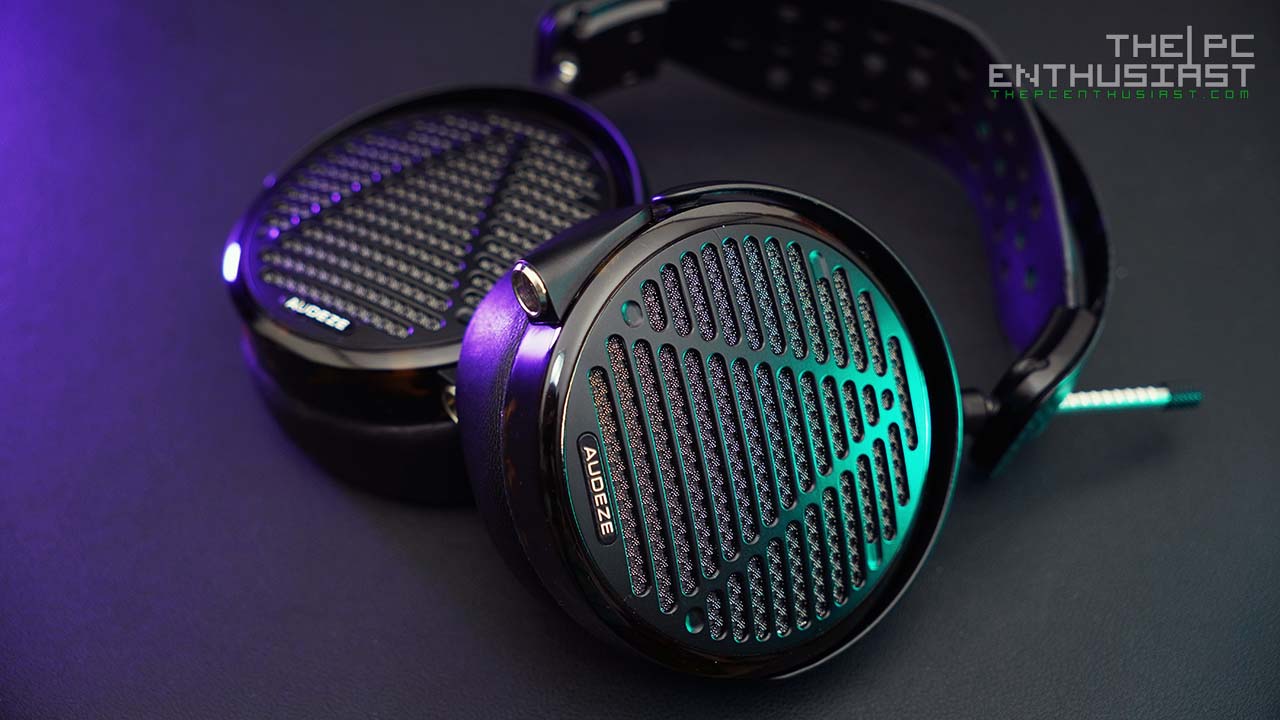

Every reviewer is so keen to tell us a 200$ DAC is a better than a 10$ DAC (on the mainboard) but the question would be would it be worth it 20x more? Most likely …no. I to be honest don’t hear any difference between this card and a realtek 1220 (with the UAD drivers) and as such I returned it. Dedicated sound cards are dead and suffer from lack of support after 2-3 years. No thanks. Buy a USB DAC if you have high quality speakers or headphones otherwise it will not worth it.
Sound is very subjective and I do find there is a difference. And it also depends on the gear you use. If you can’t tell the difference or hear any difference *with the headphone or speaker* you use (important) then it may not be worth it for you. Also, price difference doesn’t equate to how many times it’s better than the other. That’s a given. Unlike CPUs or GPUs, there are no numbers here.
What USB DAC are you referring to? If you have a Planar magnetic headphone or a mid to high end full sized cans then I would not recommend a $10 USB DAC. Get something decent like a iFi Audio DAC/AMP, or a Schiit Jotunheim. Again, it also depends on the gear you used. And always trust your ears.
Stop trolling and just get yourself an awesome sound card. These Sound Blasters (AE-7 / AE-9) are incredible next to a realtek card. If you seriously cant tell the difference you should get your ears checked out cause its night and day difference.
Another option is of course the AE-5 for often around 100USD
Yup, we have reviewed the AE-5 before, and that one is good as well.
As a mostly gamer/music listener, would you recommend the 5 or 7?
AE-5 is good. One reason you might want to get the AE-7 or even the AE-9 is they both come with an accessory which can be useful depending on your setup.
Also AE-7 and AE-9 may sound a bit “better” depending on the headphone you use. But for the untrained ear, one may not hear the difference at all.
So, get this. I bought the card right? It had issues. Indeed I heard background noise on low volume, I had an issue where friends would hear their voices in my microphone and yes it was 100 % because of the sound card and nothing else. And then, suddenly… it fixed itself, I DID NOTHING. All the issues just vanished after 1-3 months. I assume there was a faulty piece that due to use and heat got better? No idea… kind of crap experience tho for a lot of money, wish I just bought Asus at literally 30 % of the price, I’m sure it would have been ok. As for the software, literally disable everything from Creative and just keep it on the basic modes, use equalizer APO for equalization as the equalization in the command center is inferior and adds distortion. Frankly I keep it on direct mode 90 % of the time. I do not regret buying it but I expected a lot more. I think their second hand cards they produced 15 years ago had better features like actual hardware THX.
Your website won’t let me post cause it says duplicate comment, when I have not posted any commet.
Hi there, the comment was submitted twice, that’s why.
Something must have been causing static noise. Not sure either since it’s different from one system to another. But it’s a good thing it “fixed itself”, I guess.
Perhaps, the more appropriate solution would be a desktop DAC/AMP. It’s totally isolated from the PC but needs extra space on the desk.
I’m currently using Schiit Jotunheim and Schiit Hel (if mic is needed). If I still have the AE-7, I’d disable the EQ and keep things at direct mode as well. I have a pretty decent headphones and earphones now. So no need for the EQ and sound effects.
THX is a certification from the same company owned by George Lucas. There’s no such THX hardware.
Hi, finally a good review of AE-7, actally i’m using the Sundara with a SB Z and i’m waiting to receive the ae-7. I would like to as soon as possible order the tapping a50s using the AE-7 only for DAC. Already now the SBz in direct mode are nice for 37ohm but limited (192..hz), i’ve read that the external vol od AE-7 compromise the sound, it might be better without module.
I just recently bought a middle tier computer for gaming. The sound from there was ok.
I’m also using me Logitech Z5500 and when I connect me headphone “Razor X Kraken lite” it’s sounds pretty lifeless.
Once I connected the AE7 and through the Z5500, me head phone sounds much much better.
Through the Z5500 speakers, the sound was also noticeably better.
If you cannot distinguish the sound from your motherboard and from the AE7, then your hearing isn’t sensitive. Might be a good idea to get your ears tested.
Yes, there are some who can not distinguish the audio quality between onboard audio and a dedicated DAC/AMP. Even headphones with noticeable different sound signature, some people can’t tell the difference. And these types of products are simply not for them.